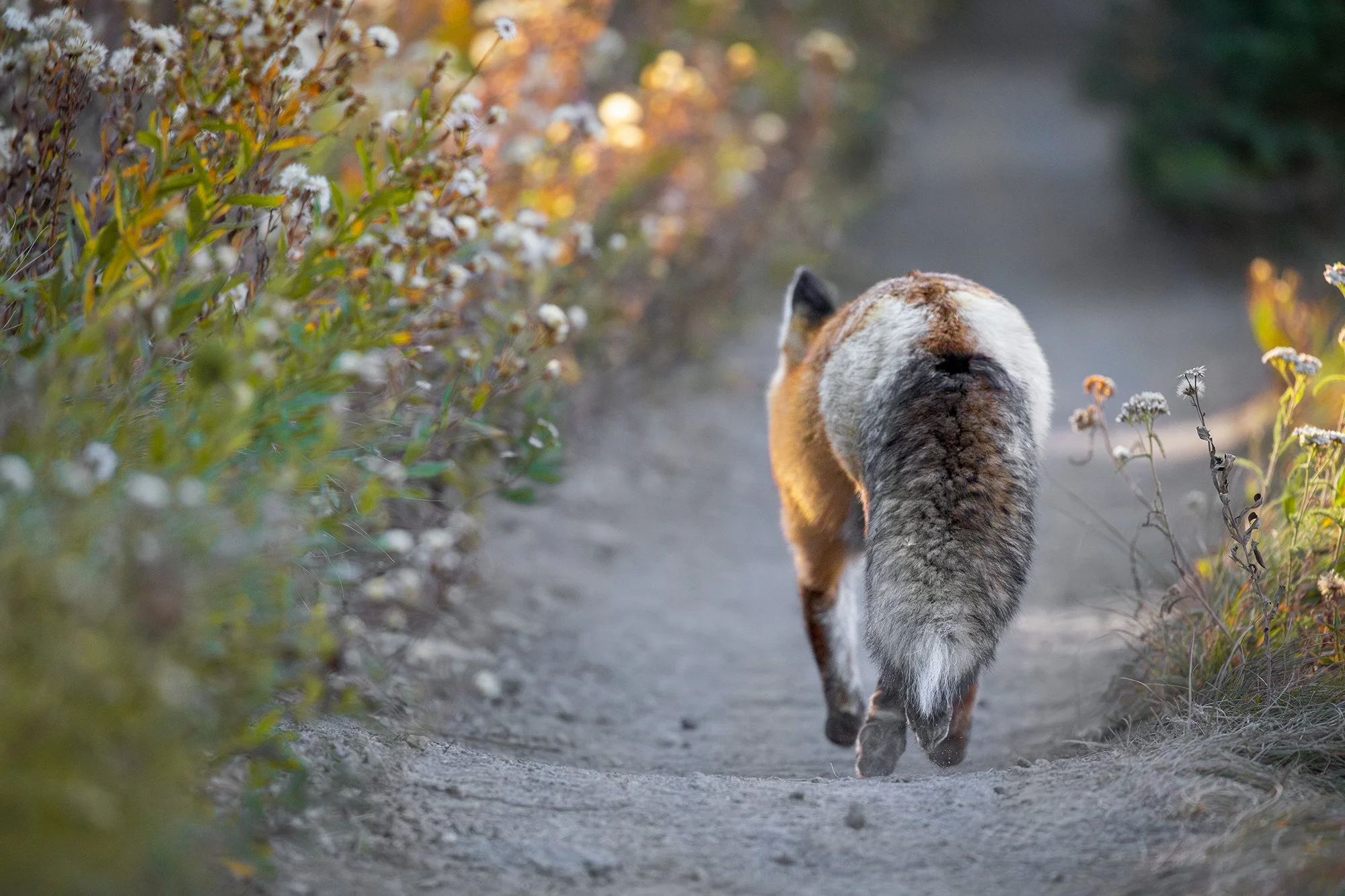
Mourning on the Mountain
Extinction Looms for the Endangered Cascade Red Fox
Last May, as solar storms illuminated skies in unusual corners of the country and social media feeds were flooded with neon hues, I received a message containing two dreaded words: mortality signal.
Ginger had been outfitted with a GPS collar by the biologists I collaborate with the previous fall. I had observed her mate, Snag, courting her before snowfall restricted access to the study area, and her GPS data suggested that she had been denning.
At first, we hoped that the solar storm caused the collar to malfunction, but when it was retrieved, three legs and a tail were found with it. Ginger had been killed by a predator.
We know by proof of trail camera footage that Snag had also spent his winter in the vicinity of the den site. This came as no surprise—he followed Ginger around like a lovesick puppy no matter the season, and was likely helping her raise merely weeks-old kits. Whether or not Snag survived the attack remains unclear. These past weeks, I’ve been devastated to find that he has not returned to his territory. If alive, he may have traveled on to find a new mate.
My heart breaks with the thought of Snag finding Ginger’s remains. So often I’d encounter him at one of their rendezvous sites, his gaze laser-focused on the trail where she’d eventually appear. He’d lavish her with gifts of voles, and cache birds for her to snack on later. Ginger would greet him by playing hard-to-get, flashing a sassy opened-mouth his way as he chased her around. But that game would end with the sweetest displays of affection, lightly touching noses as they quietly sat together before parting ways on their respective hunting routes. Witnessing the loving bond between these two wild souls will be held as treasured memories for life.
The species that killed Ginger is unknown, though I suspect it was a wolverine. This thought is not based on scientific evidence, but purely on first-hand observations.
With the rise of wolverine sightings in South Mount Rainier, Cascade red fox sightings and scat collections sharply declined, and have been nonexistent over the past two years. This coincides with a female wolverine rearing kits and frequenting the area for four years in a row.
As of 2023, wolverines appear to be spending more time in North Mount Rainier where Cascade red foxes depend on subalpine meadows. Wolverine tracks have been noted stalking Cascade red fox tracks by multiple researchers. On one occasion, Snag sought refuge by closely following me and taking shelter in nearby trees while I set up a camera trap—behavior that was highly unusual. It became evident why Snag was so skittish when I found wolverine tracks in his wake.
Ginger’s den was extremely remote on a wintery slope that was too steep to be reached by biologists. The most well-known predator of foxes—the coyote—has trouble navigating such conditions, but wolverines are adapted to handle deep snow and vertical inclines with ease.
Wolverines dig up marmot dens in the winter and feast on the hibernating animals, and there is documentation of them preying on fox dens in Alaska, indicating a likelihood of similar behavior in the contiguous United States. I imagine Ginger lost her life in a fight to save her kits.
These points are not reason to vilify wolverines. They face the same survival challenges in a shrinking, warming habitat as the Cascade red fox, and are equally crucial for maintaining a balanced and healthy mountain ecosystem. So how do we protect both species?
We don’t yet have all the answers. However, one common sense problem is the aggressive clearcutting around Mount Rainier National Park’s boundaries. Logging and development continue to take priority over endangered native species and mature forests. We have isolated Cascade red foxes and wolverines—both of which require vast home ranges—to a tiny area encircled by roads and deforestation. This restriction limits their ability to disperse, hampers gene flow, and exacerbates predation and competition for prey.
I’m not ashamed to admit that I’ve been heavily grieving the death and disappearance of these foxes that I grew to know and love over the past several years. I’m not one to frown upon growing attached to individuals of your study species. An ethical, years-long connection with a wild animal must be one of the most transformative and profound gifts a human can experience.
Ginger’s death hits hard, as each breeding female is essential to recovering the endangered population. She represented so much hope. Her playful spirit and calm demeanor allowed for long encounters, teaching me a great deal about mountain foxes.
The potential death of Snag is too crushing to accept. As smart and bold as he is, I was sure I had a few more years with him. I remain hopeful that he is still out there, and that he will find another female whom he adores as deeply as he did Ginger.
With Snag and Ginger gone, Blondie—whom I believe held the role of helping the pair raise kits—also seems to be absent from the study area.
Shadow—the fox that may be Snag and Ginger’s son born in 2022—was also GPS collared and has taken over Snag’s territory. Shadow seems to be increasingly elusive and may have become more timid of people after being trapped.
Consequently, the already small likelihood of a Cascade red fox sighting in Mount Rainier National Park has dropped significantly. However, foxes persist beyond Park borders. A third GPS collared fox may be raising young in a remote wilderness area. Hopefully she will teach us how to secure a future for her offspring.





